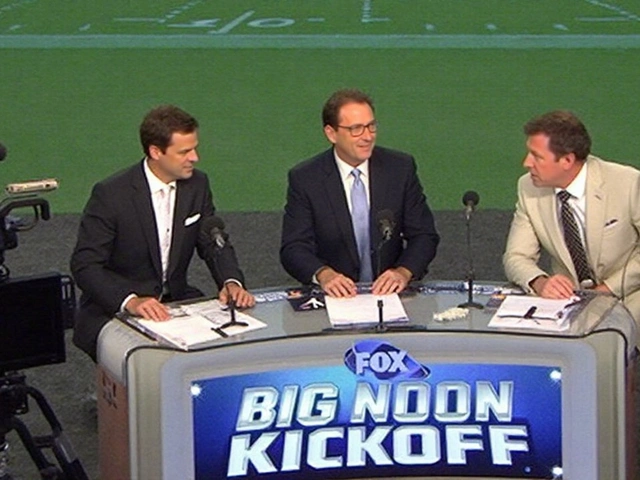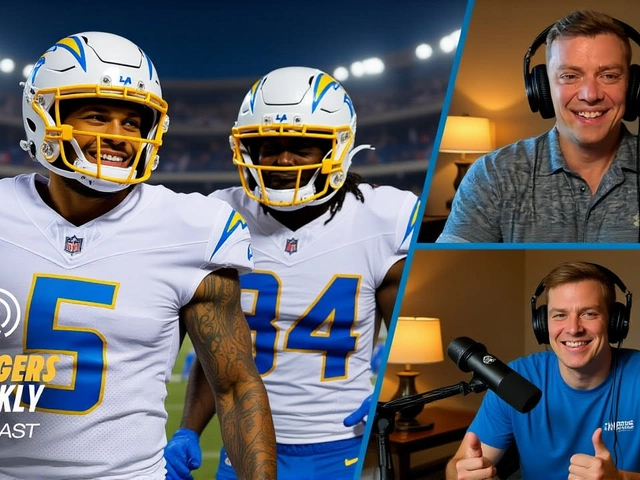
Ohio State Buckeyes fans have more ways than ever to catch every snap of the 2025-26 college football season — but not all options are created equal. With games already underway and key matchups scheduled through late November, viewers are navigating a patchwork of paid subscriptions, free ad-supported streams, and frustrating geographic restrictions. The Ohio State Buckeyes aren’t just playing for conference dominance; they’re playing in a media landscape where access depends on your wallet, your device, and even your zip code.
Where to Stream Ohio State Games Live
For live games, two major players dominate: Sling TV and Peacock. Sling TV’s Sling Orange package — priced as low as $1 for a limited-time intro offer — delivers ESPN, ESPN2, and ESPN3, which carry most of Ohio State’s non-exclusive games. That means if the Buckeyes are playing on a Saturday afternoon and ESPN has the rights, you’re covered. But here’s the catch: blackout restrictions apply. If a game is being broadcast locally on a regional network, Sling won’t show it unless you’re outside that market. That’s been true for years, but this season, with more fans cutting cords, the frustration is louder than ever.
Peacock, meanwhile, is the official streaming home for Big Ten Football. As one of 18 conference members, Ohio State benefits from Peacock’s exclusive streaming rights to select non-televised conference games. That’s huge. Not every Buckeyes game is on ESPN or ABC — some kick off at 7:30 p.m. ET on a Tuesday and only appear on Peacock. The standard plan costs $14.99/month, while the premium tier at $19.99 removes most ads — though, as Peacock quietly notes, “a small amount of programming will still contain ads,” especially live sports. For students, it’s a steal: $2.99/month for 12 months, if you cancel any existing subscription first. That’s cheaper than a pizza delivery.
The Free Option — And Why It’s Not Really Free
Then there’s ohiostatebuckeyes.com. The official site offers 37 episodes of supplemental content: press conferences, postgame recaps, highlight reels, and behind-the-scenes footage. It’s great if you missed the game or want to relive the touchdown. But here’s the fine print: you can’t watch live games here. And if you’ve got an ad blocker on? You’ll see a pop-up begging you to turn it off. “The use of software that blocks ads hinders our ability to serve you the content,” it reads. Translation: no ads, no access. It’s a digital toll booth — and you’re paying with your attention.
Even Sling’s “Freestream” service — which offers CNN and BBC World News for free, no account needed — doesn’t touch college football. No Ohio State. No Big Ten. Just international news. So if you’re hoping for a truly free way to watch the Buckeyes, you’re out of luck unless you’ve got a cable subscription or a friend who does.
Technical Requirements and Geographic Limits
Both Sling and Peacock require solid internet. Sling insists on at least 3 Mbps — fine for a phone screen, but if you’re streaming a 1080p game on a 75-inch TV, you’ll want 25 Mbps or more. Buffering during a fourth-quarter drive? That’s not the defense’s fault. It’s your router.
And then there’s the blackout problem. In 2025, it’s still a thing. If a game is being televised in Columbus by a local affiliate — say, WBNS-TV — and you’re in Franklin County, you won’t see it on Sling or Peacock. That’s because broadcast rights are territorial. The NFL has had this for decades. Now, college football’s doing the same. Fans in Ohio might be stuck watching on TV. Fans in California? They might stream it — but only if they’re not in a blackout zone for that specific matchup. The rules are opaque, and the explanations from providers are vague. “All games subject to broadcast restrictions as determined by geographic location,” says Sling. That’s not helpful. It’s a legal loophole dressed up as a policy.
Who’s Really Winning? The Students and the Streamers
The real story here isn’t the games — it’s who’s being priced out. A full-price Peacock subscription at $19.99/month adds up fast. But the $2.99 student deal? That’s the lifeline. With tuition rising and textbooks costing $200 a pop, $2.99 for a full season of Big Ten football is a bargain. It’s also a smart play by Peacock: lock in college students now, hope they stick around after graduation. Meanwhile, Sling’s $1 offer is a bait-and-switch. It’s a 30-day trial. After that, it jumps to $40/month. You’re not getting a deal — you’re getting a test drive.
And let’s not forget the hidden cost: time. Switching between apps. Logging in. Dealing with buffering. Trying to find which channel has the game. If you’re watching with friends, someone’s always arguing about the app. It’s not the game that’s complicated — it’s the viewing experience.
What’s Next for Ohio State Fans?
The 2025 season runs through December, with the Big Ten Championship game scheduled for December 6. If Ohio State makes it to the College Football Playoff — as most experts predict — those games will air on ESPN, ABC, or ESPN2. That means Sling subscribers will still be in the game. But if you’re relying on Peacock? You’re out. The playoff is not part of their Big Ten package. That’s a major gap.
Meanwhile, Ohio State’s own website is quietly building a library of content. Those 37 episodes? They’re not just highlights. They’re archives. Future fans might look back at these press conferences, the coach’s tone after a loss, the quarterback’s postgame interview — and realize this was the era when streaming fractured the fan experience. The game hasn’t changed. But how we watch it? That’s been rewritten.
Frequently Asked Questions
Can I watch Ohio State games for free without a subscription?
No live games are available for free without a subscription. While ohiostatebuckeyes.com offers 37 free episodes of highlights and press conferences, these are not live broadcasts. Sling TV’s Freestream service provides CNN and BBC World News, but no college football. Any claim of free live streaming is likely illegal or unreliable.
Why am I being blacked out on Sling TV even though I’m not in Ohio?
Blackouts occur when a game is being broadcast by a local affiliate in your current location — even if you’re not in Ohio. For example, if you’re in Chicago and the game is airing on WGN, Sling must block its stream to respect broadcast rights. This rule applies regardless of your allegiance. It’s not about where you live — it’s about where the TV signal is licensed to broadcast.
Is Peacock’s student discount really worth it?
Absolutely. At $2.99/month for 12 months, you get access to every Big Ten game streamed exclusively on Peacock — including Ohio State’s non-ESPN matchups. That’s less than $0.10 per game if you watch all 12 regular season games. Plus, you get NFL, WWE, and NBC Sports. The catch? You must cancel any existing Peacock subscription first. It’s a one-time offer, so act before your eligibility expires.
What happens if Ohio State makes the College Football Playoff?
Playoff games are broadcast on ESPN, ABC, or ESPN2 — not Peacock. That means Peacock subscribers will need to switch to Sling TV, YouTube TV, or a cable provider to watch. Peacock’s Big Ten deal doesn’t extend to the national playoffs. This creates a frustrating gap: you pay for Peacock all season, only to lose access when it matters most.
Do I need a smart TV to watch these services?
No. Sling TV and Peacock work on smartphones, tablets, computers, Roku, Fire Stick, Apple TV, and gaming consoles. You don’t need a smart TV — just an app and a reliable internet connection. Sling requires at least 3 Mbps, but for HD streaming, aim for 15 Mbps or higher. If your Wi-Fi struggles with Zoom calls, it’ll struggle with football.
Will these streaming options still be available next season?
Most likely, yes — but prices and packages may change. Peacock’s exclusive Big Ten rights run through 2029, so their coverage is locked in. Sling TV’s pricing is volatile; their $1 deal won’t return. Expect standard rates to rise slightly as advertising and rights costs climb. Fans should lock in student deals now and monitor contract renewals — the next big shift could come in 2026 when new media deals kick in.





